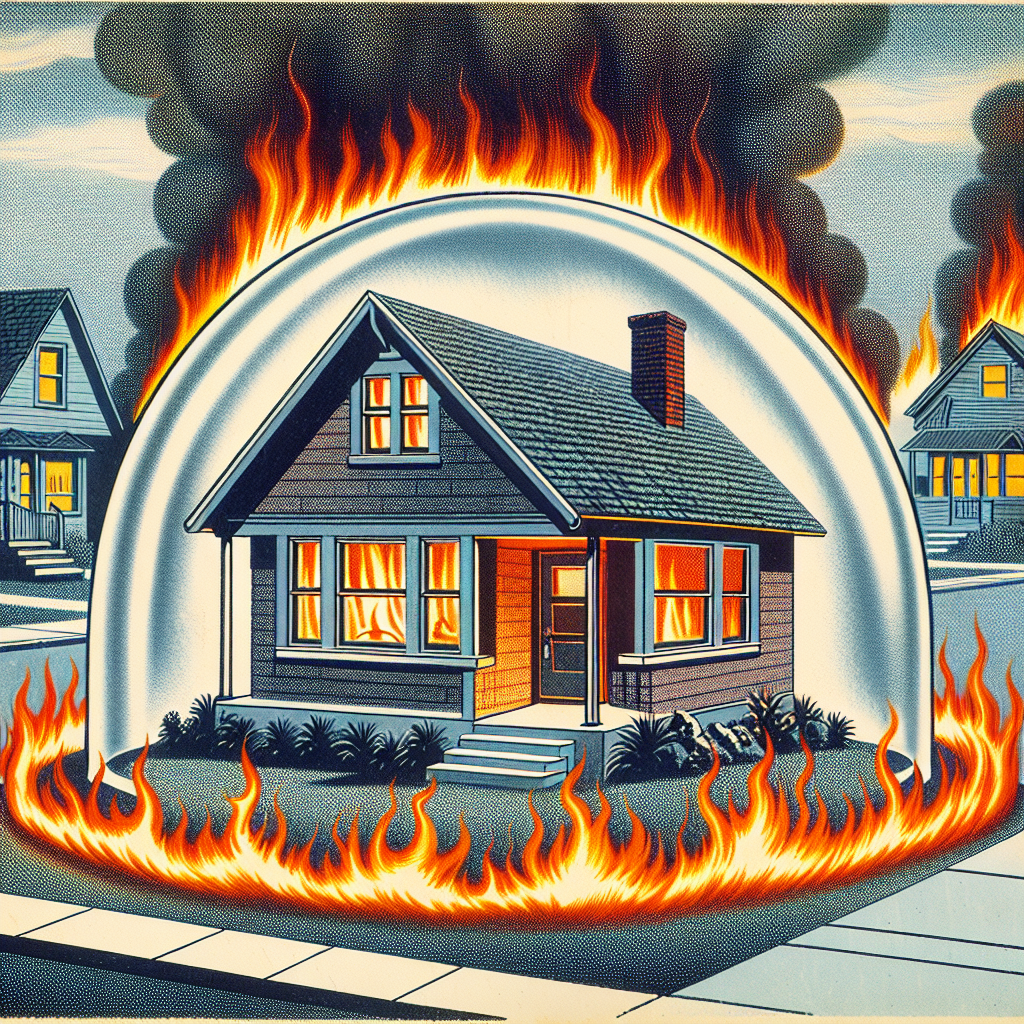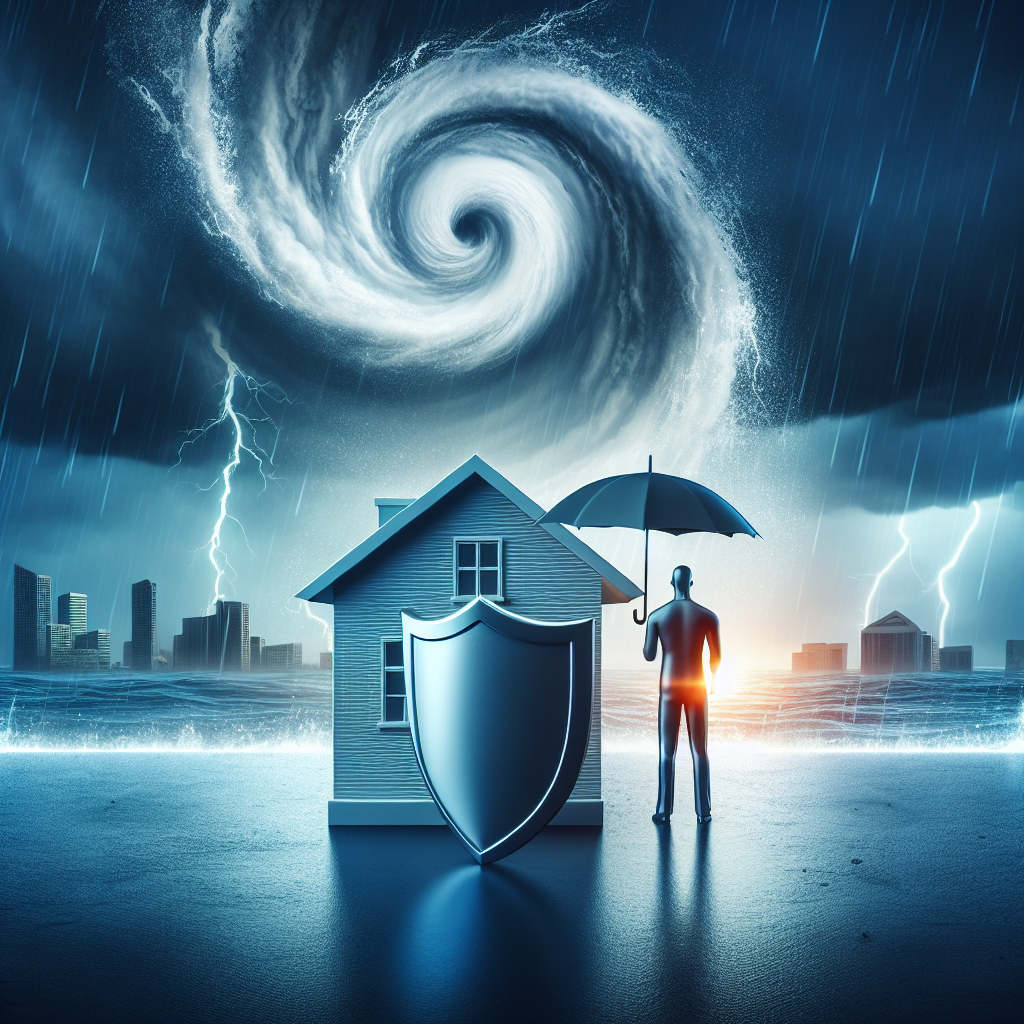Filed under Home Insurance on
Fire Coverage Home Insurance: A Guide for Homeowners

House fires do not announce themselves. They spark from a cluttered outlet, a forgotten candle, a lightning strike, or a wildfire ember carried on the wind. When they do, the difference between a devastating loss and a manageable setback often comes down to your preparation and your policy. Fire Coverage Home Insurance is the safety net that allows you to rebuild, replace, and recover. This guide explains what is covered, how claims work, how to right-size your limits, and what you can do today to cut premium costs while increasing peace of mind.
What does fire actually destroy?
When people hear “house fire,” they picture flames. In reality, heat, smoke, soot, and water from firefighting often cause the majority of the damage. Smoke can permeate drywall, insulation, and HVAC systems. Soot etches glass and corrodes metal. Water swells subflooring and fosters mold if not remediated quickly. Modern furnishings can release toxic residues when burned. A good policy recognizes the totality of this damage—not just charred wood.
What does Fire Coverage Home Insurance include?
In most homeowners policies (the HO‑3 and HO‑5 forms in the United States), fire and smoke are named perils covered across several sections. You’ll typically see protection in four buckets:
- Dwelling coverage: Repairs or rebuilds the structure, including attached components like roofing, walls, flooring, plumbing, electrical, and built-in cabinetry.
- Other structures: Covers detached structures such as a garage, shed, or fence, usually at 10 percent of the dwelling limit by default.
- Personal property: Reimburses your belongings, from furniture and electronics to clothing and kitchenware. This can be paid at actual cash value or replacement cost, depending on your policy.
- Loss of use (additional living expenses): Pays for temporary housing, meals, pet boarding, and other necessary costs when your home is uninhabitable during repairs.
Policies also commonly cover the cost of debris removal, reasonable measures taken to protect property from further damage, and water damage from firefighting efforts. Many insurers pay for professional smoke and odor remediation, including HVAC cleaning and ozone treatments, because lingering smoke can cause ongoing health issues and resale problems.
What’s not covered or limited?
- Intentional acts: Arson committed by or on behalf of the insured is excluded.
- Neglect after a loss: If you fail to take reasonable steps to protect the home post-fire (for example, tarping a roof), subsequent damage may not be paid.
- Vacancy clauses: Extended vacancy can restrict coverage; check your policy if a property sits empty for long periods.
- Business property: Specialized or high-value business equipment stored at home may have low limits unless you add an endorsement.
- Ordinance or law: Extra costs to meet current building codes may be limited unless you carry an ordinance or law endorsement.
How limits, deductibles, and valuations work
Your first line of defense is setting the right dwelling limit. Home value on real estate websites is not the same as rebuild cost. Rebuild cost reflects local labor rates, materials, debris removal, and code upgrades. Ask for a reconstruction estimate from your agent or insurer and update it annually, especially after renovations or inflation spikes. Insurers increasingly apply inflation guards, yet large swings in materials and labor can outpace automatic adjustments.
Replacement cost vs. actual cash value
Replacement cost coverage pays what it takes to rebuild or replace with new materials of like kind and quality, without deducting for depreciation. Actual cash value subtracts depreciation—often a painful gap for roof, flooring, and personal electronics. Many carriers offer extended or guaranteed replacement cost options, providing 10 to 50 percent (or more) above your dwelling limit if costs run higher than expected. The costlier your local labor and code requirements, the more valuable this buffer becomes.
Deductibles and wildfire-specific deductibles
A standard fixed deductible applies to most perils, including fire. In some high-risk regions, insurers may add a separate wildfire deductible or percentage-based deductible. Understand which applies before a loss so you are not surprised.
Common fire scenarios and how coverage responds
- Kitchen fire: Grease flare-ups are a leading cause of house fires. Expect coverage for cabinetry, appliances, smoke damage, and water mitigation.
- Electrical fire: If faulty wiring causes a blaze, fire damage is typically covered; however, upgrading outdated wiring after a loss may fall under code upgrade coverage, not standard repair.
- Chimney or fireplace: Creosote buildup can lead to fires. Damage is covered, but maintenance neglect could complicate claims. Keep service records.
- Wildfire: If embers ignite your roof or landscaping, resulting losses and additional living expenses are covered under most policies. Availability of coverage and pricing, however, varies widely by region.
- Smoke-only event: Even without visible flames, pervasive smoke damage is typically covered. Document odors and residue promptly.
How much Fire Coverage Home Insurance do you need?
Right-sizing coverage is part math, part judgment. Start with a professional replacement cost estimate. Then look at these elements:
- Dwelling: Aim for 100 percent of true rebuild cost, plus extended replacement cost if available.
- Other structures: Increase beyond the default if you have a sizable detached garage, workshop, or fencing.
- Personal property: A replacement cost endorsement often pays for itself after a single claim. Inventory your belongings to avoid guesswork.
- Loss of use: Consider local rental rates for homes similar to yours. Extended repairs can take many months, especially after large-scale events.
- Ordinance or law: Older homes benefit from higher limits to meet current codes for electrical, plumbing, energy, and accessibility.
How to inventory your home quickly
- Walk each room with your phone camera, opening closets and drawers.
- Save receipts and appraisals for big-ticket items like furniture, electronics, and jewelry.
- Record serial numbers for appliances and electronics when possible.
- Back up your inventory to the cloud and share a copy with a trusted contact.
Wildfire risk and market trends
In fire-prone states, the availability and cost of coverage are changing. Carriers are reevaluating risk footprints, raising rates or deductibles, and in some areas pausing new policies. This shift traces to larger, faster-moving wildfire seasons, more homes built in the wildland–urban interface, and higher reinsurance costs. Fire Coverage Home Insurance is still widely available, but homeowners increasingly need to shop early, demonstrate risk mitigation, and consider state-backed or surplus lines markets when standard options are limited.
Industry groups and researchers, including the Insurance Institute for Business & Home Safety (IBHS) and the National Fire Protection Association (NFPA), emphasize “home hardening” and community-scale defenses as the most effective path to sustained insurability. Insurers are beginning to offer tangible credits for verified mitigation—an encouraging trend for homeowners willing to invest in resilience.
Mitigation steps that can earn discounts or help eligibility
- Fire-resistant roof and ember-resistant vents.
- Noncombustible 0–5 foot zone around the home: rock or hardscape instead of mulch.
- Cleared gutters and screened soffits to block ember entry.
- Tempered or dual-pane windows facing vegetation.
- Well-maintained defensible space out to 100 feet, as local codes allow.
- Participation in recognized programs like Firewise USA or IBHS Wildfire Prepared Home.
Prevention reduces losses and premiums
While no one can eliminate risk, a pattern of prevention lowers the chance of a claim and strengthens your position with insurers. Consider these house-wide habits and upgrades:
- Install interconnected, monitored smoke alarms and test monthly. Add smart water sensors to catch firefighting-related leaks after small kitchen fires.
- Maintain electrical systems: Replace aging panels, add AFCI/GFCI protection, and avoid overloading outlets or running cords under rugs.
- Service heating systems and chimneys annually. Keep flammable items three feet from heat sources.
- Store lithium-ion batteries away from sleeping areas and follow manufacturer charging guidelines.
- Keep fire extinguishers in the kitchen, garage, and workshop. Review the PASS method with family members.
- Upgrade to Class A fire-rated roofing materials where feasible.
What influences the price of Fire Coverage Home Insurance?
Insurers weigh a mix of home-specific and household factors. Understanding them helps you tune what you can control.
- Construction: Fire-resistive materials, newer wiring and plumbing, and sprinkler systems often reduce premiums.
- Location: Proximity to a hydrant and a staffed fire station matters, as do local wildfire models and brush maps.
- Claims history: Fewer and smaller prior claims can keep rates low and options broad.
- Coverage choices: Higher limits and endorsements cost more; higher deductibles can lower premiums.
- Protective devices: Monitored alarms and leak detection can earn credits.
- Bundling: Packaging home and auto typically unlocks multi-policy discounts.
Ways to save without hollowing out coverage
- Choose a deductible that fits your emergency fund, not the smallest number offered.
- Install monitored smoke detection and, where practical, a residential sprinkler system.
- Bundle home and auto; compare bundle pricing across at least three carriers.
- Ask about mitigation credits for roofing, vents, and defensible space.
- Review and update your inventory to ensure you are not over-insuring low-value items or under-insuring big ones.
The claims process, step by step
After a fire, adrenaline and smoke linger longer than you expect. A simple process helps you move steadily from emergency to recovery. Fire Coverage Home Insurance is designed to respond quickly if you provide the right information.
- Ensure safety. Evacuate, call 911, and do not reenter until authorities give the all-clear.
- Notify your insurer. Ask about approved vendors for board-up, water mitigation, and smoke cleanup. Early intervention prevents secondary damage.
- Document everything. Take photos and video of each room before cleanup. Save receipts for hotels, meals, pet boarding, and emergency purchases.
- Meet the adjuster. Walk through damage together. Point out smoke migration into closets, attic, and HVAC returns, not just visible charring.
- Request a scope of loss in writing. It should outline structural repairs, personal property losses, and ALE.
- Get repair estimates. Consider a contractor with fire restoration experience. Ask about code upgrades and permit timelines.
- Track contents. For personal property, list items with age, approximate value, and replacement model where possible. Your pre-loss inventory speeds this up.
- Review settlement details. Verify depreciation holdback and how to recover withheld amounts upon replacement. Confirm debris removal and odor remediation are included.
- Keep communication simple. Use email for a paper trail and store all documents in a shared folder.
Should you hire a public adjuster or attorney?
Most claims resolve without one. If a large, complex loss stalls or you feel under-indemnified, consulting a reputable public adjuster or attorney can help. Verify licensing, references, and fee structures. In urgent situations, start mitigation first—delays can worsen damage and complicate coverage.
Common pitfalls that cost homeowners money
- Underinsuring the dwelling: Real estate value is not rebuild cost. Update limits annually and after renovations.
- Skipping ordinance or law: Code-driven costs, from electrical upgrades to energy standards, can be significant.
- Settling for actual cash value on contents: Replacement cost for personal property often pays multiples more in a total fire loss.
- Ignoring smoke in hidden cavities: Insist on HVAC cleaning and inspection of attics and crawl spaces.
- Not aligning coverage with home-based work: If you store inventory or use specialized equipment at home, add endorsements to avoid low sublimits.
- Assuming wildfires are always covered the same: Review deductibles and any wildfire-specific terms in high-risk zones.
Special situations
Condos
Condo owners carry a unit owners policy covering interior finishes, personal property, and loss of use. The association policy handles common elements. Clarify where responsibility splits and consider loss assessment coverage for shared losses stemming from a building fire.
Renters
Renters insurance covers your belongings and additional living expenses after a fire. The landlord’s policy does not replace your personal items. Renters policies are usually affordable and provide essential liability protection, too.
Landlords and short-term rentals
Dwelling policies for rentals differ from homeowners policies. Confirm you have the right form (e.g., DP‑3 for comprehensive coverage), loss of rents coverage, and any endorsements required if you host short-term guests. Some standard homeowners policies exclude or limit coverage when a property is used as a business.
Endorsements that strengthen fire protection
- Extended or guaranteed replacement cost: Expands rebuild funds beyond your stated limit.
- Ordinance or law: Covers the cost to bring undamaged portions up to current code.
- Replacement cost on contents: Removes depreciation on personal belongings.
- Building ordinance debris removal and increased limits for smoke remediation: Useful for older homes and high-end finishes.
- Inflation guard: Automatically adjusts limits to reflect rising costs.
Expert insights and industry perspectives
Insurance professionals, restoration contractors, and fire safety organizations share consistent guidance. The Insurance Information Institute notes that fire and lightning produce some of the highest-severity claims in homeowners insurance—meaning when they happen, they are costly. The NFPA emphasizes the outsized role of cooking and electrical systems in residential fires, reaffirming that routine maintenance and safe practices reduce loss frequency. IBHS research shows that relatively modest upgrades—ember-resistant vents, Class A roofs, and a 0–5 foot noncombustible zone—can dramatically reduce wildfire damage. These insights collectively point to a strategy: pair strong coverage with practical risk reduction.
Is Fire Coverage Home Insurance different by state?
Base policy forms are similar nationally, but state regulations affect pricing, underwriting, and available endorsements. Some states allow credit-based insurance scores; others do not. High wildfire states may have special deductibles, eligibility rules, or state-supported insurance plans as a last resort. If you moved recently, do not assume your previous coverage applies the same way in your new state.
Questions to ask your agent
- What is my current estimated rebuild cost, and when was it last updated?
- Do I have extended or guaranteed replacement cost for the dwelling?
- Are my personal belongings insured at replacement cost?
- How much ordinance or law coverage do I have?
- Are there wildfire-specific deductibles or sublimits?
- Which mitigation actions earn the largest discount with your company?
- What proof do you need to apply those mitigation credits?
Fire Coverage Home Insurance and smart home technology
Modern sensors and systems make prevention practical. Monitored smoke detectors alert first responders faster. Smart stoves can auto-shutoff when left unattended. Heat sensors in garages and laundry rooms supplement traditional smoke alarms. Leak detectors help after small fires when sprinklers or hoses cause secondary water damage. Ask your insurer whether devices qualify for premium credits, and maintain documentation for underwriting.
Case study snapshots
Smoke without flames
A dryer belt malfunctioned, generating heavy smoke but no open flame. The family filed a claim for smoke damage. Their policy covered professional cleaning, duct sanitation, repainting, and temporary housing for three weeks. Because they had replacement cost on contents, clothing and textiles were paid at full replacement after cleaning attempts failed.
Wildfire ember attack
Embers ignited mulch near wooden steps, spreading to the siding. The home suffered exterior damage and attic smoke. Having a Class A roof and ember-resistant vents limited loss. The insurer covered structural repairs, affected contents, and hotel costs during remediation. After the claim, the homeowners replaced mulch with gravel and documented the change to earn a mitigation credit.
Frequently asked questions
Is Fire Coverage Home Insurance required by mortgage lenders?
Lenders require homeowners insurance sufficient to protect the structure at least up to the loan amount, and that policy typically includes fire. If you drop coverage or underinsure, a lender may place costly force-placed insurance. Keep your own policy current and comprehensive.
Does insurance pay for an entirely new kitchen if only part burned?
It depends on scope and materials. If smoke and heat make cabinets or surfaces unsalvageable, replacement is typical. If only a section is damaged, insurers pay to repair or replace the affected area. Matching finishes is often addressed by local regulations and policy language; discuss with your adjuster and contractor.
Will my premium increase after a fire claim?
Premiums often rise after a paid claim, and discounts for claims-free history may fall off. However, shopping and mitigation steps can help offset increases.
Are arson investigations standard?
Insurers investigate the cause of significant fires as part of routine claims handling, often in coordination with fire departments. Honest policyholders benefit from these investigations, as they help distinguish accidental loss from fraud.
A 10-minute fire-prep checklist
- Test smoke alarms and check battery dates.
- Snap quick video of each room for your inventory.
- Clear the 0–5 foot zone around your foundation of leaves and mulch.
- Clean the lint trap and exterior dryer vent.
- Locate fire extinguishers and verify pressure gauges are in the green.
- Set a calendar reminder for annual chimney and HVAC service.
- Email your agent to request an updated replacement cost estimate.
Putting it all together
Fire risk is universal, but loss is not inevitable. The right mix of prevention, adequate limits, and smart endorsements transforms a potential catastrophe into a recoverable event. Fire Coverage Home Insurance is not just a policy—it is a plan. Confirm your rebuild cost, upgrade to replacement cost on contents, add ordinance or law coverage, and document mitigation steps that reduce both risk and price. If you live in a wildfire-exposed area, take advantage of hardening strategies that insurers and researchers agree truly work.
Before your next renewal, schedule a 30-minute policy review. Ask pointed questions, update your inventory, and verify discounts. With a few practical moves, you can strengthen your home’s defenses, optimize your coverage, and make sure that if the unthinkable happens, your recovery is swift and complete. That is the quiet promise at the heart of Fire Coverage Home Insurance—and why it deserves your attention today.
Quick glossary
- Replacement cost: Pays to rebuild or replace new, without depreciation.
- Actual cash value: Replacement cost minus depreciation.
- Ordinance or law: Coverage for code-required upgrades after a loss.
- Additional living expenses (ALE): Temporary housing and increased living costs when your home is uninhabitable.
- Extended replacement cost: Additional percentage above dwelling limit for rebuilds.
- Defensible space: Managed vegetation zones that slow or stop wildfire.
Final action steps
- Request a current reconstruction cost estimate and adjust your dwelling limit.
- Add or confirm replacement cost on personal property and extended replacement cost on the dwelling.
- Increase ordinance or law coverage to match your home’s age and local codes.
- Complete a photo and video inventory and store it offsite or in the cloud.
- Harden the home: Class A roof, ember-resistant vents, and a 0–5 foot noncombustible zone.
- Ask your insurer which mitigation credits apply and how to document them.
- Review deductibles, including any wildfire-specific terms.
- Bundle policies and compare at least three quotes during renewal.
Your home is more than a structure; it is your daily life. Treat your coverage accordingly. With the right preparation and a well-tailored policy, Fire Coverage Home Insurance becomes the quiet partner that ensures you can rebuild what truly matters.





